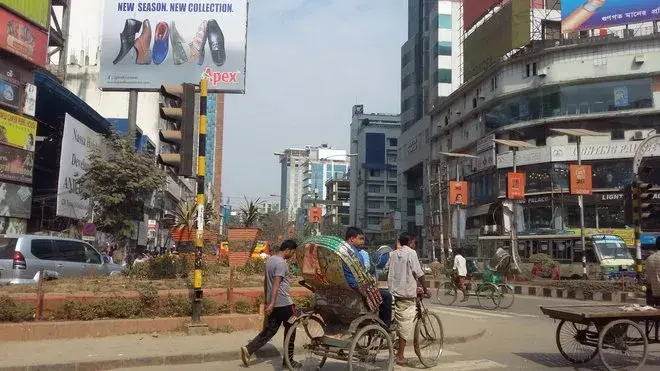Liberal trade policies to boost the best
by Bjorn Lomborg
Like many places around the globe, Bangladesh has made great strides in liberalizing trade over recent decades. Twenty-five years ago, the protection rate, which takes into account tariffs and other trade barriers, was 74 percent. Today, that rate is just 27 percent.
Slashing high tariffs and opening up the economy has produced great benefits for the country, because consumers can buy products where they can be produced the cheapest. Largely thanks to such reforms and related export incentives, Bangladesh’s export sector has boomed, particularly in apparel. But costs from some aspects of trade policies that remain inefficient and cumbersome continue to hold back additional gains that could be achieved.
What strategies can best promote trade, helping the economy and its export sectors flourish even more? Bangladesh Priorities aims to discover the best solutions to this and other questions that relate to national development efforts. The partnership between the Copenhagen Consensus Center and BRAC has commissioned teams of experts from the country and around the world to examine the most cost-effective ways for Bangladesh to achieve her development aims.
New research by Selim Raihan, economics professor at the University of Dhaka and executive director of the South Asian Network on Economic Modeling (SANEM), and Farazi Binti Ferdous, research fellow at SANEM, highlights trade policy reforms that can benefit Bangladesh. In particular, further efforts to liberalize trade promise to bolster the country’s most successful industries even more.
| Strategy | Takas of benefits per taka spent |
|---|---|
| Trade liberalization | 10 |
| Facilitate trade with better infrastructure | 2 |
| Bond market creation | 3 |
Many people have strong feelings about trade liberalization, partly because of the way the costs and benefits of such policies are distributed. The costs are relatively small, but they are concentrated and pronounced in specific sectors where people might lose their jobs and need retraining. The overall benefits, on the other hand, can be incredibly large, but are spread widely across an entire economy and population. As consumers, all people benefit from cheaper goods from free trade that lower the cost of living, but the benefit to each person is modest.
With increased liberalization, there would be costs to domestic producers and markets that become exposed to foreign competition. Some workers in these industries may even lose jobs. The most affected areas of the Bangladeshi economy would be light manufacturing, utilities and construction, livestock and meat markets, and mining and extraction.
But while more liberal trade policies would hinder inefficient sectors, they would help promote much higher growth in the most efficient and productive ones. Essentially more free trade would make Bangladesh focus its efforts on what it does best. The majority of industries would see increases in output, because the entire economy would have access to cheaper goods and services.
The economists examine the economic impact of a 50-percent reduction in current tariff levels. This is done in the state-of-the-art computer model of Bangladesh’s economy, the so-called Computable General Equilibrium model. The model shows that the textile and clothing sectors—industries where Bangladesh has comparative advantages—would benefit most, with an estimated growth of 5-6 percent. Liberalization would also bring an associated gain in income for everyone in the country of about 1-2 percent—this is the large overall benefit that would be spread widely across the entire population.
While not all would gain initially, the overall impact of liberalization would bring a significant and permanent boost in Bangladeshi GDP. Each taka spent toward liberalizing trade would do 10 takas of good.
The analysis also explored a second strategy: broad investment in better infrastructure and transport procedures to facilitate trade. High transactions costs from transit and customs procedures still slow formal trade in many areas. These inefficiencies weaken links to the global economy and can diminish export competitiveness and foreign investment.
Bangladesh’s international standing in various measures that are related to ease of trade reflect these weaknesses—the country ranks 148th in the U.N.’s International Supply Chain Connectivity index, lagging far behind regional competitors like Sri Lanka and India. When it comes to the World Bank’s index that measures ease of cross-border trade, Bangladesh ranks 174th out of 189 economies.
The authors examined ways to simplify trade processes, which would increase transparency and efficiency while minimizing transactions costs. Specific measures would include improving coordination of exit and entry posts at border crossings, as well as spending to improve road and rail transport and connectivity. In all, each taka spent on trade facilitation would yield about two takas of benefits.
A second analysis, by M.G. Mortaza, an economist at the Asian Development Bank, and Wasel Bin Shadat, a lecturer in econometrics at the University Of Manchester, examines a related proposal to boost investment and drive economic growth: creation of a secondary bond market. While Bangladesh already has primary bond market, where commercial banks are participants and act as primary dealers of government debt, its secondary bond market is still nascent, with only two corporate bonds operating in the country. The lack of a well-developed bond market and, by extension, the absence of an advanced financial sector, impedes economic growth.
The authors examine a proposal to establish an active secondary bond market so that government and private sector can mobilize more resources for long-term investments. The Asian Development Bank is currently funding a government program with Tk 19.5 billion (Tk 1,950 crore) to implement the structural reforms needed to increase liquidity in the bond market, broaden and diversify the investor base, and enhance the supply of alternative financial instruments.
One major benefit of the reforms would come from lower interest rates that would result, which are closely associated with higher investment and increased economic growth. The lower interest rates would benefit both government and private corporations. And research from the experiences of other countries, particularly Kenya, confirms that there are considerable benefits to economic growth associated with bond markets. A second major benefit would come from the reduced transactions costs that would come from a more transparent Bangladeshi bond market.
Overall, each taka spent toward creating a bond market to mobilize more resources for long-term investments could do perhaps 3 takas of good.
The findings mentioned above suggest that both trade facilitation and reforming trade policies would bring substantial benefits to the economy. If you were in charge, how would you choose to spend resources aimed at doing the most good for the country? We want to hear from you at copenhagen.fbapp.io/tradepriorities. Let’s continue the conversation about how to do the most good for every taka spent in Bangladesh.
Dr. Bjorn Lomborg is president of the Copenhagen Consensus Center, ranking the smartest solutions to the world’s biggest problems by cost-benefit. He was ranked one of the world’s 100 most influential people by Time Magazine.
This article was originally posted in The Daily Star.


